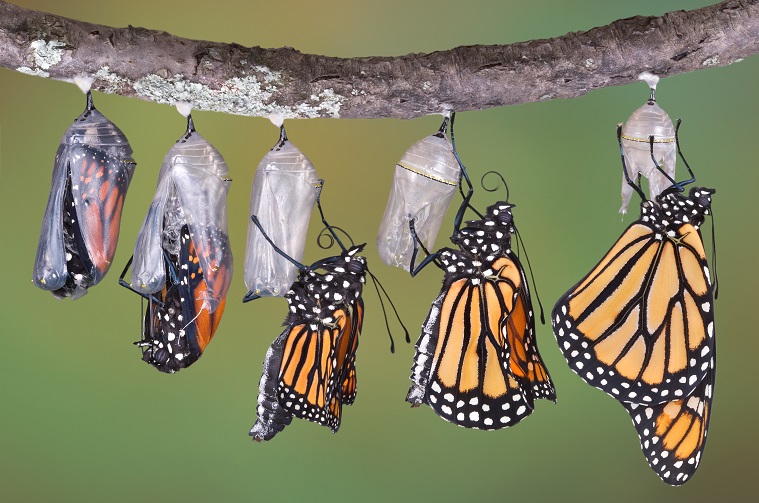Every autumn the king of the butterflies returns to the Outer Banks. The monarch butterfly, with its striking orange and black pattern and 4” wingspan, comes back each year to breed, rest and then leave on a 2400 mile journey to the mountains of Mexico.
Their migration is one of the most amazing journeys in nature. After leaving the Outer Banks they head unerringly to one location in the Sierra Madre Mountains south of Mexico City—the El Rosario Monarch Butterfly Preserve. There, millions and millions of monarch butterflies from all over the eastern half of North America gather to rest, breed and then fly back to their summer or fall homes.
Scientists have determined Danaus plexippus—the scientific name for Monarch butterflies—use the position of the sun as a solar compass, but there are still many questions yet to be answered about how they can so precisely fly to their destination.
That migration is somewhat unique among the 20,000 species of butterflies in the world. Most butterflies hibernate in cold weather, and unlike other migrating butterfly species, according to the USDA, “The monarch is the only butterfly known to make a two-way migration as birds do.”
For the butterflies leaving the Outer Banks, the mortality rate would seem to be very high. As they migrate south along the coast, any strong west wind would blow them out to sea, and for many a certain death.
There is not complete agreement about how they accomplish their migration. The most likely theory is that it takes four generations.
Remarkably the Monarch butterflies that migrate to Mexico are the hardiest or longest living in a series of generations, living up to eight months, long enough to make the entire journey from the Outer Banks to Mexico.

The return trip, though, seems to take three generations of butterflies. They leave Mexico in the spring, the females invariably laying eggs on some species of milkweed, and then die after about six weeks. That cycle is repeated two more times, each cycle bringing the butterfly closer to its destination.
But migration is not the only odd characteristic of the monarch butterfly. As a caterpillar, it will eat only milkweed, a plant that contains cardiac glycosides, compounds that are poisonous to almost all mammals and create a bitter flavor for any predator thinking about eating them. The plant is both food and protection for the butterfly although there are insect predators that do not seem to care about the taste of milkweed.
The Monarch butterfly is currently under federal protection as a potentially threatened species. It may seem odd to mark an insect as threatened when population counts seem to indicate there are approximately 60 million worldwide, but that figure represents a dramatic and rapid 80% decline over the past decade.
There are theories about why the decline is happening. The most likely is that logging in the vicinity of El Rosario Preserve is disrupting their life cycle. However, there is also concern that farming has reduced the number of milkweed plants in the United States leading to a reduced food and habitat of Monarch eggs.
There are a number of milkweed species that are native to the Outer Banks—Nags Head Woods list five species—but quite a number of milkweed species will thrive on the Outer Banks. Most butterfly garden flowers include a number of milkweed plants.





